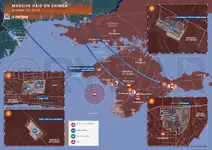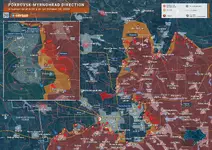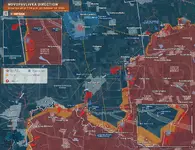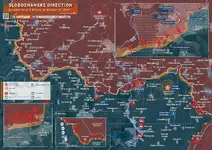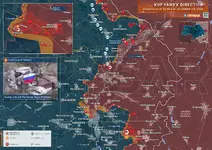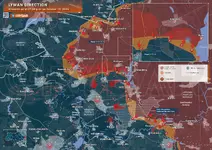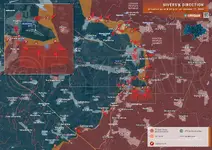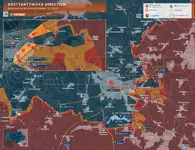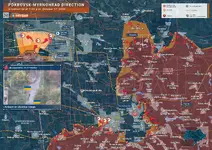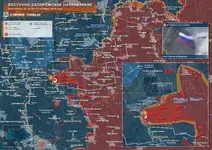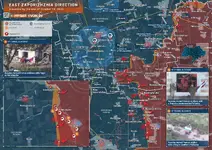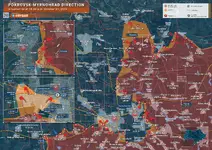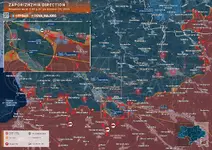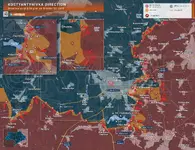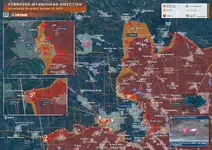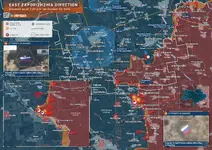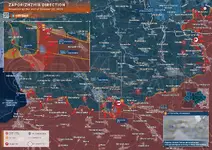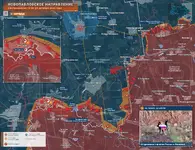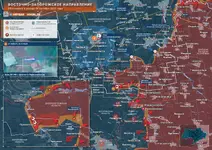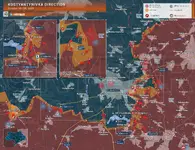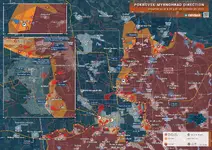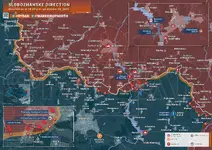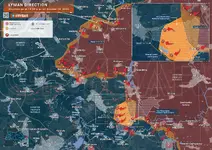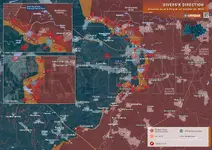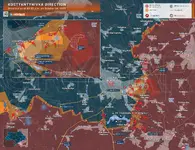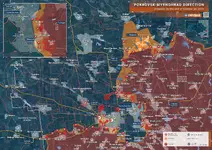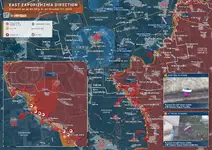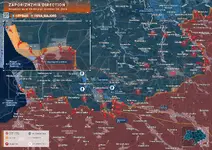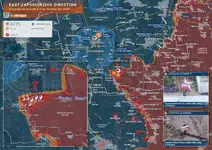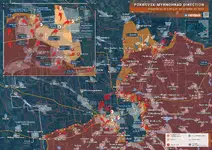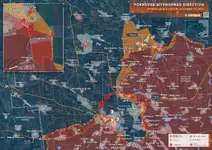"Strikes on the rail infrastructure of Ukraine. September 4 - October 9, 2025
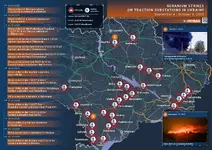
 The massive airstrike campaign of the Russian Armed Forces affects not only the enemy's energy sector but also the railway infrastructure of the so-called Ukraine. And Geran attack drones play a key role. Russian troops carried out several series of strikes on depots, as well as stationary and mobile traction substations (TSS) of the enemy. The most massive attacks occurred in the northern and southern regions of the country, which depend on stable rail traffic.
The massive airstrike campaign of the Russian Armed Forces affects not only the enemy's energy sector but also the railway infrastructure of the so-called Ukraine. And Geran attack drones play a key role. Russian troops carried out several series of strikes on depots, as well as stationary and mobile traction substations (TSS) of the enemy. The most massive attacks occurred in the northern and southern regions of the country, which depend on stable rail traffic.
 In the Chernihiv region, the Russian Armed Forces carried out several strikes on traction substations in Bakhmach and Nosivka. Also in this area, according to some reports, drones destroyed at least one locomotive carrying ammunition. As a result, train service was partially disrupted along the entire railway line from Kiev to Chernihiv and Sumy. Local authorities were forced to organize regular bus routes to avoid transport disruptions.
In the Chernihiv region, the Russian Armed Forces carried out several strikes on traction substations in Bakhmach and Nosivka. Also in this area, according to some reports, drones destroyed at least one locomotive carrying ammunition. As a result, train service was partially disrupted along the entire railway line from Kiev to Chernihiv and Sumy. Local authorities were forced to organize regular bus routes to avoid transport disruptions.
 Infrastructure in the Kirovohrad and Poltava regions, where key transport hubs are located, was also damaged. In particular, drone strikes partially paralyzed traffic on several sections from Pomichna station to Kremenchuk.
Infrastructure in the Kirovohrad and Poltava regions, where key transport hubs are located, was also damaged. In particular, drone strikes partially paralyzed traffic on several sections from Pomichna station to Kremenchuk.
 Russian Forces also struck transit points along the main railway routes in the south of the country, which transport a significant portion of military cargo from the west and the Black Sea ports. One of the primary targets was the infrastructure of the Odessa region. The strikes led to delays in train service in the Belino-Tashlyk-Odessa "triangle," which connects the region with the rest of the country. The Odessa marshalling depot, TC-1, sustained significant damage.
Russian Forces also struck transit points along the main railway routes in the south of the country, which transport a significant portion of military cargo from the west and the Black Sea ports. One of the primary targets was the infrastructure of the Odessa region. The strikes led to delays in train service in the Belino-Tashlyk-Odessa "triangle," which connects the region with the rest of the country. The Odessa marshalling depot, TC-1, sustained significant damage.
 This forces the enemy to reroute some trains to routes with lower capacity, and to transport some freight entirely on non-electrified tracks. Attacks on Ukrainian diesel locomotives are already being reported online.
This forces the enemy to reroute some trains to routes with lower capacity, and to transport some freight entirely on non-electrified tracks. Attacks on Ukrainian diesel locomotives are already being reported online.
 However, it is premature to talk about a complete railway collapse in the border regions or in the south of so-called Ukraine. Not all attacked traction rolling stock were completely disabled, and the enemy is still capable of mitigating the consequences of attacks on them using mobile traction substations.
However, it is premature to talk about a complete railway collapse in the border regions or in the south of so-called Ukraine. Not all attacked traction rolling stock were completely disabled, and the enemy is still capable of mitigating the consequences of attacks on them using mobile traction substations.
 The enemy also has a fleet of mainline diesel locomotives. Detecting and destroying them is much more difficult than with stationary targets. However, the total number of them at the disposal of so-called Ukraine is small, so the enemy will not be able to completely replace the damaged rolling stock with them.
The enemy also has a fleet of mainline diesel locomotives. Detecting and destroying them is much more difficult than with stationary targets. However, the total number of them at the disposal of so-called Ukraine is small, so the enemy will not be able to completely replace the damaged rolling stock with them.
 Nevertheless, the new campaign against railway infrastructure is encouraging in the systematic nature of Russian military strikes. Previously, they were limited to isolated hits on individual energy facilities or aimed entirely at destroying the tracks or trains themselves, without producing long lasting results. Now, however, the Russian Armed Forces have switched to combined attacks on several sectors of the enemy infrastructure at once. This allows to simultaneously reduce overall energy generation and transit capacity and damage the transport infrastructure of the so-called Ukraine."
Nevertheless, the new campaign against railway infrastructure is encouraging in the systematic nature of Russian military strikes. Previously, they were limited to isolated hits on individual energy facilities or aimed entirely at destroying the tracks or trains themselves, without producing long lasting results. Now, however, the Russian Armed Forces have switched to combined attacks on several sectors of the enemy infrastructure at once. This allows to simultaneously reduce overall energy generation and transit capacity and damage the transport infrastructure of the so-called Ukraine."
"Analysis of the Russian Armed Forces strikes on the infrastructure facilities of Ukraine. October 6-12, 2025
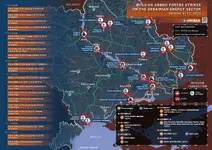
 The past week was marked by a large-scale series of strikes by the Russian Armed Forces against critical energy infrastructure of the so-called Ukraine. From October 6 to 12, targets were hit both in the border regions and deep in the rear, causing serious power outages in several regions.
The past week was marked by a large-scale series of strikes by the Russian Armed Forces against critical energy infrastructure of the so-called Ukraine. From October 6 to 12, targets were hit both in the border regions and deep in the rear, causing serious power outages in several regions.
 In the north of the country, strikes hit substations in the Chernihiv and Sumy Oblasts. In Shostka, a prolonged blackout was reported; most homes are receiving power from generators. Power outages were reported in Konotop and Nizhyn, leading to delays and cancellations of dozens of train services.
In the north of the country, strikes hit substations in the Chernihiv and Sumy Oblasts. In Shostka, a prolonged blackout was reported; most homes are receiving power from generators. Power outages were reported in Konotop and Nizhyn, leading to delays and cancellations of dozens of train services.
 Pinpoint strikes also hit the Bavaria and Yuzhkabel substations in the Kharkov region. Regional authorities warned of the risk of a severe winter due to the inability to quickly restore the power grid.
Pinpoint strikes also hit the Bavaria and Yuzhkabel substations in the Kharkov region. Regional authorities warned of the risk of a severe winter due to the inability to quickly restore the power grid.
 In Kiev, the main strikes hit CHPP-5 and, presumably, CHPP-6, leading to the severance of the energy corridor between nuclear power plants in the west of the so-called Ukraine and the eastern regions of the country. Blackouts and communication interruptions were recorded.
In Kiev, the main strikes hit CHPP-5 and, presumably, CHPP-6, leading to the severance of the energy corridor between nuclear power plants in the west of the so-called Ukraine and the eastern regions of the country. Blackouts and communication interruptions were recorded.
 In the occupied part of the DPR, strikes hit the Slavyansk Thermal Power Station, causing rolling blackouts throughout Ukrainian controlled territory.
In the occupied part of the DPR, strikes hit the Slavyansk Thermal Power Station, causing rolling blackouts throughout Ukrainian controlled territory.
 Strikes also hit facilities in Kryvyi Rih, Dnipropetrovsk, Kremenchuk, Zaporizhzhia, Kamenskoye, Zelenodolsk, and Kaniv. Damage was confirmed to the Kremenchuk, Sredneprovska, and Dnipro Hydroelectric Power Stations, as well as the Prydniprovska and Kryvyi Rih Thermal Power Stations. This caused emergency outages and power supply instability in the surrounding areas.
Strikes also hit facilities in Kryvyi Rih, Dnipropetrovsk, Kremenchuk, Zaporizhzhia, Kamenskoye, Zelenodolsk, and Kaniv. Damage was confirmed to the Kremenchuk, Sredneprovska, and Dnipro Hydroelectric Power Stations, as well as the Prydniprovska and Kryvyi Rih Thermal Power Stations. This caused emergency outages and power supply instability in the surrounding areas.
 In the Odessa region, the Usatovo and Luzanovka substations were attacked, leaving thousands of customers in the region without power.
In the Odessa region, the Usatovo and Luzanovka substations were attacked, leaving thousands of customers in the region without power.
 The scale and timing of the October attacks significantly exceeded the pace of attacks recorded in September. The consequences are being felt even in regions where there were no attacks, such as the Rivne and Lvov regions, indicating a loss of grid stability.
The scale and timing of the October attacks significantly exceeded the pace of attacks recorded in September. The consequences are being felt even in regions where there were no attacks, such as the Rivne and Lvov regions, indicating a loss of grid stability.
 The power grid's resilience is gradually approaching a critical threshold - restoration is taking longer, and reserve capacity is being depleted.
The power grid's resilience is gradually approaching a critical threshold - restoration is taking longer, and reserve capacity is being depleted.
 Considering the simultaneous destruction of several large power plants and 330kV substations, as well as the wide geographic coverage (10+ regions), it can be argued that the damage inflicted by the Russian Armed Forces over the past week (October 6-12) is significantly higher than the September average.
Considering the simultaneous destruction of several large power plants and 330kV substations, as well as the wide geographic coverage (10+ regions), it can be argued that the damage inflicted by the Russian Armed Forces over the past week (October 6-12) is significantly higher than the September average.
 In terms of the scale of damage, this was one of the most difficult weeks for the Ukrainian power system in the entire SMO, especially considering not only the actual strikes but also their long-term consequences. If this pattern of attacks continues, power outages can be expected in the coming weeks in the eastern and central regions of so-called Ukraine."
In terms of the scale of damage, this was one of the most difficult weeks for the Ukrainian power system in the entire SMO, especially considering not only the actual strikes but also their long-term consequences. If this pattern of attacks continues, power outages can be expected in the coming weeks in the eastern and central regions of so-called Ukraine."

"Analysis of the Russian Armed Forces strikes on the infrastructure facilities of Ukraine. October 6-12, 2025

Last edited:

